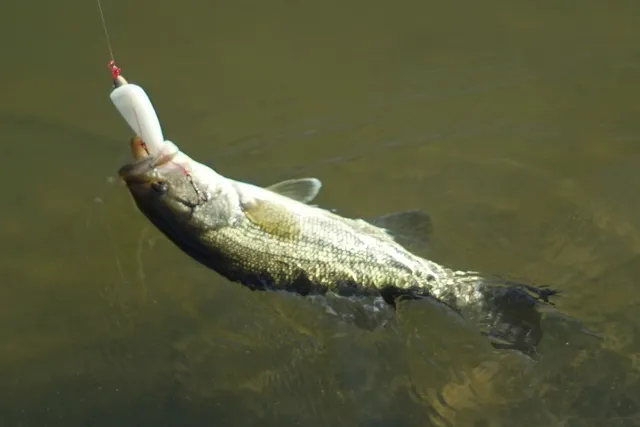
Flatfish-ish 3D-Printed Lure
prusaprinters
One of my favorite fishing lures is Helin's Flatfish, which dates from the 1930s, but is still available from the Yakima Bait Company. The shape delivers very organic motion over a wide range of retrieval speeds. As a kid making my own wooden fishing lures, I tried to improve upon it... with little success. This, my first attempt at 3D printing a similar design, caught two largemouth bass (shown here) in half an hour! You'll probably catch more fish with a real Flatfish, but catching any fish at all on a homemade 3D-printed lure is cool. I've now added an improved second design in three sizes.... Instructions The original version of the lure (the red one in the last image) prints fairly well without support in the orientation shown, horizontal on its back, although a small portion of the back might be a little ragged that way. I printed it in glow-in-the-dark PLA on my MakerGear M2 at 0.25mm and 40% fill; that gives a nice approximation to neutral buoyancy. It could and probably should be finished with paint, etc., but I was curious to see if fish would hit the green-glowing plain lure (as seen in the photo taken in my darkened basement). The improved version from May 12, 2015, is posted here in 3 sizes: 40mm, 65mm, and 80mm (as seen in gold, white, and blue in the last photo). It prints without support sitting on it's tail end, as shown in the stl files. It may be useful to use a brim or raft, because the lure is quite tall and is supported by very little area. Neither version uses screw-eyes for attaching the two treble hooks; instead, I simply ran heavy fishing line through a path in the body to the two hooks and left a couple of inches in front of the lure as a leader. The hole highest-up in the print orientation is where the leader should enter the lure. I thought that would help keep the motion natural, but I now suspect that the weight of the screw-eyes actually would help to keep the lure moving more consistently; oh well. Anyway, it still works, and the fact that the fishing line can slide through the body a little makes it easier to deal with unhooking the fish. The photos show how the hooks slide away from the lure to ease release of the fish; while fishing, the hooks are against the lure body as they would be for any other lure. Update: Well, it's April 12 and in about an hour of fishing I've caught another half dozen bass on this lure! It rides better with a little weight in the front, as suspected, although the sliding weight shown in the last photo didn't work as well as a little crimp-on; I'll no doubt be tweaking this design. Notice that the fifth fish of the day actually broke one barb off the center treble hook, but otherwise the lure has been fine after being wacked by eight bass. The only trick to fishing this lure is keeping it from going belly-up on the surface. Immediately starting to reel in when the lure hits the water usually will result in it diving appropriately. Should it surface, nudge it a bit until it is oriented correctly, then slowly start reeling in. A fast retrieve will usually send it a bit deeper than a slow one. Like a real Flatfish, it can sometimes circle off a bit; that's ok, it's part of the charm... at least until that motion gets it tangled in some weeds. ;-) Category: Sport & Outdoors
With this file you will be able to print Flatfish-ish 3D-Printed Lure with your 3D printer. Click on the button and save the file on your computer to work, edit or customize your design. You can also find more 3D designs for printers on Flatfish-ish 3D-Printed Lure.
